Honey bees
- pesteraser pest control chennai
- Portfolio
- Honey bees
Ants are social insects belonging to the family Formicidae and are among the most diverse and successful groups of organisms on Earth, with over 12,000 recognized species. They play critical roles in ecosystems
Call Us when you Need Help!
Honey bees
Honey bees, belonging to the genus Apis, are vital pollinators known for their crucial role in agriculture and ecosystem health. Comprising approximately eight recognized species and 43 subspecies, honey bees, particularly the western honey bee (Apis mellifera), are notable for their complex social structures, sophisticated communication methods, and unique abilities to produce honey. Their importance extends beyond honey production; they are essential for the pollination of many crops and wild plants, making them indispensable for food security and biodiversity worldwide. The taxonomy of honey bees reveals a rich diversity within the Apis genus, encompassing various species adapted to different environments. This diversity not only enhances their ecological resilience but also highlights their significance in maintaining the balance of ecosystems. Honey bees exhibit fascinating behaviors, including the famous waggle dance, which communicates the location of food sources to other members of the colony, and a well-defined division of labor among queens, workers, and drones that ensures the colony’s functionality and survival. Despite their ecological importance, honey bee populations face significant threats from pesticide exposure, habitat loss, diseases, and climate change. These challenges have raised alarms among scientists, conservationists, and agriculturalists alike, prompting various initiatives aimed at protecting honey bees and their habitats. Public awareness campaigns and collaborative research efforts are vital in addressing the decline of these essential pollinators, emphasizing the urgent need for conservation strategies that support their populations and the agricultural systems that depend on them. In summary, honey bees are not only fascinating organisms with complex social structures and behaviors but also essential contributors to global agriculture and ecosystems. Their decline poses serious threats that necessitate immediate action and comprehensive research to ensure their survival and the continuation of their vital ecological roles
Types OF Honey Bees
Classification
Honey bees belong to the genus Apis, which is part of the family Apidae. Within this genus, there are currently eight recognized species, with a total of 43 subspecies. The primary species include Apis andreniformis (the black dwarf honey bee), Apis cerana (the eastern honey bee), Apis dorsata (the giant honey bee), Apis florea (the red dwarf honey bee), Apis koschevnikovi (Koschevnikov’s honey bee), Apis laboriosa (the Himalayan giant honey bee), Apis mellifera (the western honey bee), and Apis nigrocincta (the Philippine honey bee) .
Taxonomic Classification
The taxonomic hierarchy for honey bees can be detailed as follows:
- Kingdom: Animalia
- Phylum: Arthropoda
- Class: Insecta
- Order: Hymenoptera
- Family: Apidae
- Genus: Apis
- Species: Various (as listed above).
Core Microbiome
The core bacterial community associated with the gut of honey bees, specifically Apis cerana, plays a significant role in their health and digestion. Recent studies utilizing sequencing technologies such as the Nanopore MinION platform have categorized the microbial taxa within the honey bee gut at multiple taxonomic levels, revealing diverse communities that can be affected by environmental factors like altitude . This microbial diversity is crucial for maintaining the overall health and functionality of honey bee colonies.
Culturing and Identification of Honey Bee Gut Microbes
In efforts to understand the microbial assemblages associated with honey bees, researchers have employed computational tools such as MetONTIIME and Qiime2 to conduct detailed taxonomic characterization of the gut microbiome. These methods involve sequencing ribosomal RNA and analyzing the data to identify operational taxonomic units (OTUs), which are essential for assessing microbial diversity. The findings indicate varying levels of species diversity across different altitudes, with significant clustering of microbial communities based on environmental factors . This rich taxonomic and microbial diversity highlights the importance of honey bees in ecological and agricultural contexts, as well as the necessity of further research to understand their complex relationships with both their environment and gut microbiota.
Types of Honey Bees
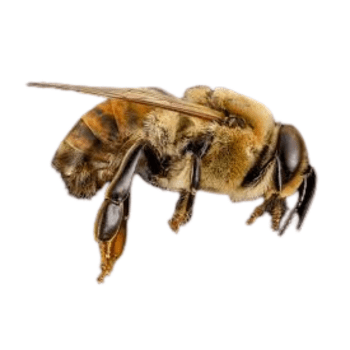
Western honey bee (Apis mellifera)
- Distribution: Worldwide, originally from Europe, Africa, and the Middle East
- Characteristics: This is the most widely used species for beekeeping due to its high honey production. It has many subspecies adapted to various climates, making it highly versatile.
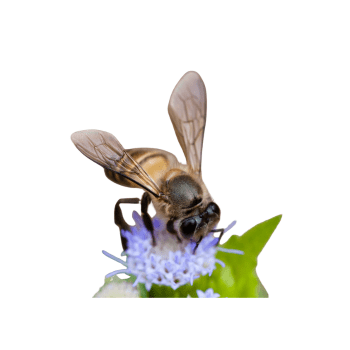
Eastern honey bee (Apis cerana)
- Distribution: Asia, from India to Japan
- Characteristics: Smaller than Apis mellifera, it is used for beekeeping in parts of Asia. It is notable for its ability to coexist with Varroa mites, a common honey bee pest.
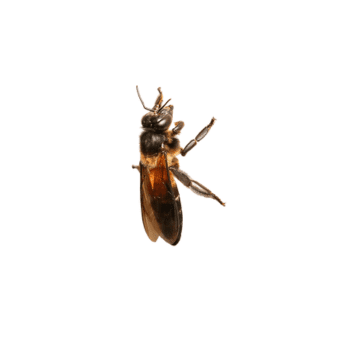
Giant honey bee (Apis dorsata)
- Distribution: South and Southeast Asia
- Characteristics: Known for building large, single-comb nests in the open, often on tree branches or cliffs. It is highly defensive and not typically domesticated.
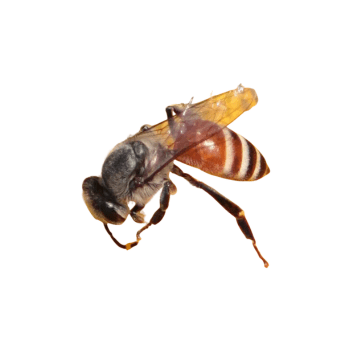
Dwarf honey bee (Apis florea)
- Distribution: South and Southeast Asia
- Characteristics: A smaller species that constructs small, single-comb nests in forests and rural areas. It is less defensive and not commonly used for beekeeping.
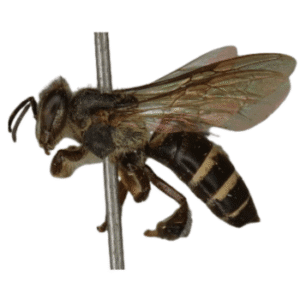
Black dwarf honey bee (Apis andreniformis)
- Distribution: South and Southeast Asia
- Characteristics: Similar to Apis florea but darker in color, it builds small nests in bushes and trees. It is less studied but shares traits with other dwarf species.
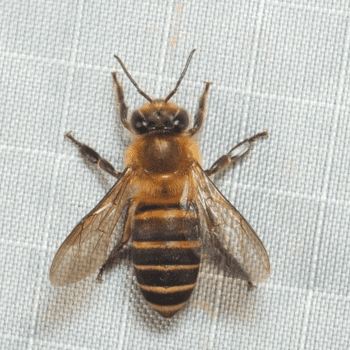
Koschevnikov’s honey bee (Apis koschevnikovi)
- Distribution: Borneo and parts of Malaysia
- Characteristics: Recognized for its aggressive behavior, it resembles Apis cerana but is more defensive. It is not widely used in beekeeping.

Philippine honey bee (Apis nigrocincta)
- Distribution: Philippines and Sulawesi, Indonesia
- Characteristics: Similar to Apis cer covering ana but with distinct physical traits, it is utilized in local beekeeping in its native regions
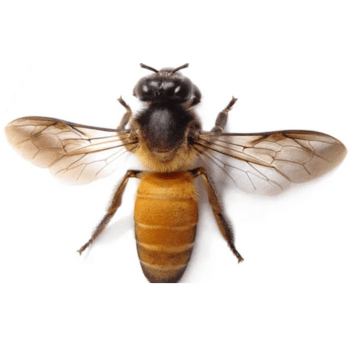
Himalayan honey bee (Apis laboriosa)
- Distribution: Himalayan region, including Nepal, Bhutan, and parts of India and China
- Characteristics: The largest honey bee species, it builds large nests on cliffs and is adapted to high altitudes. It is not domesticated but harvested for honey in some areas
Biology and Anatomy
General Structure
Honey bees, belonging to the genus Apis, exhibit distinct anatomical features that facilitate their role in pollination and honey production. Their bodies are divided into three main segments: the head, thorax, and abdomen, each equipped with specialized structures adapted for various functions. The head contains two large compound eyes and three simple eyes, which enhance their vision, especially for detecting movement and color patterns in flowers. The thorax is characterized by three pairs of legs and two pairs of wings, enabling efficient flight and foraging capabilities.
Sensory Organs
Honey bees possess highly developed sensory organs, particularly their antennae, which are covered with thousands of sensory cells that aid in touch and smell. Their sense of smell is notably acute, surpassing that of mammals, and is crucial for locating food sources and facilitating communication among hive members. Additionally, their compound eyes allow them to see ultraviolet light, which helps in identifying flowers that are otherwise invisible to human sight.
Reproductive Anatomy
The reproductive anatomy of honey bees is specialized for their complex social structure. Queen honey bees have a unique organ known as the spermatheca, where they store sperm received during mating. This allows queens to control the fertilization of their eggs, laying unfertilized eggs that develop into drones and fertilized eggs that become female workers or new queens. During the swarming season, worker bees can also lay unfertilized eggs if the queen is absent or weakened, leading to the emergence of more drones.
Locomotion and Foraging
Honey bees are equipped with six legs that provide stability for walking and foraging. Their legs feature claws for grasping uneven surfaces and sticky pads for gripping smooth surfaces, enabling them to navigate various environments effectively. The pollen basket, or corbicula, is located on their hind legs, where they store collected pollen using specialized hairs. This adaptation is essential for their role as pollinators, as they transport pollen from flower to flower, facilitating plant reproduction.
Feeding Mechanism
Honey bees have a long, specialized mouthpart called the proboscis, which they use to extract nectar from deep within flowers. This adaptation is crucial for their feeding and plays a vital role in the pollination process, as they inadvertently transfer pollen while feeding
Wax Production
Honey bees possess wax glands located on their abdomens, which enable them to produce beeswax for constructing honeycombs. The wax is secreted in small flakes, which the bees then manipulate with their mandibles to form hexagonal cells for storing honey and raising brood. The ability to produce wax is a key factor in the success of honey bee colonies, as it allows them to create stable environments for their young and stores for their food supply.
Communication
Honey bees communicate using various methods, including the well-known waggle dance, which conveys information about the distance and direction of food sources relative to the hive. This intricate dance is crucial for coordinating foraging efforts among the colony members, demonstrating the sophisticated social structure of honey bee communities.
Behavior and Social Structure
Honey bees (Apis mellifera) are highly social insects that live in organized colonies, which typically consist of a single queen, numerous workers, and a number of drones. The social structure of a honey bee colony is intricate and relies on effective communication among its members to maintain functionality and cohesion.
Communication
Effective communication is vital in honey bee colonies, which often contain tens of thousands of individuals. Bees communicate through a combination of chemical signals (pheromones) and dances. The queen produces pheromones that convey her health status to the colony, while workers communicate threats through alarm pheromones when the hive is disturbed.
These chemical signals are critical for coordinating activities within the colony and for signaling reproductive status. Bees also employ a sophisticated dance language to relay information about food sources. The waggle dance, for example, communicates both the distance and direction to food resources located more than 150 meters away from the hive. This dance involves a series of movements, with the number of waggles indicating distance and the angle of the dance corresponding to the direction relative to the sun.
A variation known as the sickle dance conveys information about food located at moderate distances of 50 to 150 meters. Interestingly, while bees cannot see their dances in the dark confines of the hive, they likely use their antennae to detect air-particle movements caused by these dances.
Division of Labor
The primary roles within a honey bee colony are divided among the three castes: the queen, workers, and drones. The queen’s main function is reproduction, while worker bees undertake the bulk of the labor, which includes foraging, nursing, and hive maintenance. Workers are sexually undeveloped females and possess specialized structures such as brood food glands, wax glands, and pollen baskets that allow them to perform various tasks essential for the colony’s survival. The life span of a worker bee can vary significantly; those raised in summer typically live around six weeks, while those born in fall may survive for up to six months, aiding in the colony’s winter survival and the rearing of new generations in spring. Drones, the male bees, are the largest members of the colony and serve primarily to mate with a virgin queen. They do not perform any work within the hive, lack a stinger, and die shortly after mating. Their presence, however, is considered important for the overall health and normal functioning of the colony. Drones typically remain in the hive until they reach sexual maturity at around eight days old and can feed themselves after four days.
Social Structure Dynamics
The presence of a queen bee is essential for maintaining the social structure of the colony. Her pheromones not only inform the workers of her well-being but also suppress their reproductive capabilities, ensuring that the colony functions cohesively. In the absence of a queen, workers may initiate the process of raising a new queen, signifying the adaptive nature of the colony’s social structure. During the colder months, when resources become scarce, drones are often expelled from the hive to conserve food stores, leaving the queen and worker bees to maintain the colony. In contrast, queenless colonies can allow drones to remain, illustrating the fluid dynamics of roles and responsibilities within the hive.
Social Behavior and Collective Intelligence
Ants exhibit a complex social structure characterized by collective decision-making and labor allocation. Unlike individual cognitive processes typically studied in psychology, ant colonies operate as dynamic systems, where the interactions among individuals lead to emergent behaviors at the colony level. For example, ants can coordinate their activities, such as foraging and nest-building, through chemical communication and coordinated movement, allowing for efficient resource use and colony maintenance. The adaptability of ant behavior is also reflected in their cognitive capabilities. Some species, like Atta cephalotes, have workers with varying brain structures correlated with the complexity of tasks they perform. Their brains contain a structure called the mushroom body, linked to learning and memory, which is proportionally larger in workers involved in more complex behaviors
Honey Production
Honey production is a complex biological process primarily performed by bees of the genus Apis, with Apis mellifera being the most widely recognized species for commercial honey production. This process begins when worker bees collect nectar from flowers, a task that is influenced by various environmental factors, including seasonal variations and the type of flora available in a particular region
Nectar Collection and Processing
The collection of nectar occurs during foraging trips, where bees gather sugary liquid from blossoms. The nectar’s composition varies significantly based on the flower species, which results in a diverse range of honey flavors and characteristics. Globally, there are approximately 300 unique honey flavors attributed to the distinct regional floral populations. Once nectar is collected, it enters the honey stomach, a specialized organ in worker bees that allows for the enzymatic breakdown of the sugars present in the nectar, primarily converting sucrose into glucose and fructose
Ripening and Storage
After nectar is processed in the honey stomach, it is regurgitated into the honeycomb cells within the hive. At this stage, the nectar still contains a high water content, ranging from 60% to 75%. The bees then engage in a process of evaporation to reduce the water content to below 20%, which is crucial for honey ripening. This process is facilitated by the wings of the bees fanning the nectar, promoting moisture loss and resulting in the thick, viscous substance known as honey
Chemical Composition and Variations
Honey is primarily composed of carbohydrates, particularly sugars such as fructose and glucose, along with other organic compounds, enzymes, and a variety of micronutrients
Microbiological Aspects
The microbiological composition of honey is influenced by various factors, including the environment from which the nectar is sourced and the bees’ gut microbiota. Different types of bacteria and yeast, such as Bacillus and Saccharomyces, may be present in honey, contributing to its overall health benefits and potential antimicrobial properties
Habitat Preferences
Ants can thrive in a wide range of habitats. For instance, leafcutter ants, which are primarily found in South and Central America and parts of the southern United States, demonstrate remarkable adaptability in their foraging behaviors. They can carry weights up to twenty times their own body weight, showcasing their ability to exploit their environment effectively. Additionally, these ants form extensive colonies that can span over 30 meters and comprise millions of individuals, reflecting their complex social structures and habitat needs
Threats and Conservation
Honey bees face a multitude of threats that jeopardize their populations and, by extension, the agricultural systems that rely on them. Understanding these challenges is crucial for effective conservation strategies.
Conservation Efforts
Local Initiatives
Conservation efforts can start on a local scale, with individuals and communities playing a vital role. Simple actions, such as creating bee-friendly habitats by planting native flowers and reducing pesticide use, can make a significant difference. Educational programs aim to inspire local residents to think creatively about how they manage their land to support honey bee populations.
Collaborative Research and Global Expertise
Organizations like the Center for Pollinator Research at Penn State University are at the forefront of addressing the pollinator crisis through research and collaboration. The International Conference on Pollinator Biology, Health and Policy brings together experts from around the world to share insights and develop solutions to improve the health of bee populations. This collaborative approach not only fosters research but also translates findings into practical solutions applicable to diverse communities.
Public Awareness and Policy Advocacy
Raising public awareness about the plight of honey bees has galvanized support for conservation initiatives. Citizens can advocate for policy changes aimed at protecting bee habitats and regulating pesticide use. Campaigns that highlight the ecological and economic importance of honey bees encourage collective action towards their conservation.
Major Threats to Honey Bees
Pesticide Exposure
The extensive use of pesticides in agriculture is one of the most significant threats to honey bee health. These toxic chemicals, designed to eliminate various pests, often harm honey bees as well, weakening their ability to forage and reproduce. This exposure can lead to decreased populations and impaired colony health, contributing to the ongoing decline in bee numbers.
Habitat Loss
Pollinator habitats have been extensively lost due to agricultural expansion, resource extraction, and urban development. This habitat destruction limits the availability of floral resources necessary for honey bees to thrive. Although some altered landscapes may offer limited floral resources, the overall loss of diverse habitats continues to threaten bee populations.
Diseases and Parasites
Honey bees are susceptible to various diseases and parasites, notably the varroa mite, which has a profound impact on their health. Varroa mites can introduce numerous viruses into bee colonies, leading to significant disease symptoms and, ultimately, colony collapse if left unchecked. Infestations can result in deformed bees and drastically reduced populations. Other diseases, such as nosema, further compound the challenges faced by honey bees, particularly during winter and early spring.
Climate Change
Climate change presents additional challenges by altering the availability of floral resources and the timing of blooming periods. Changes in temperature and weather patterns can disrupt the synchronization between pollinators and the plants they depend on, leading to food scarcity

